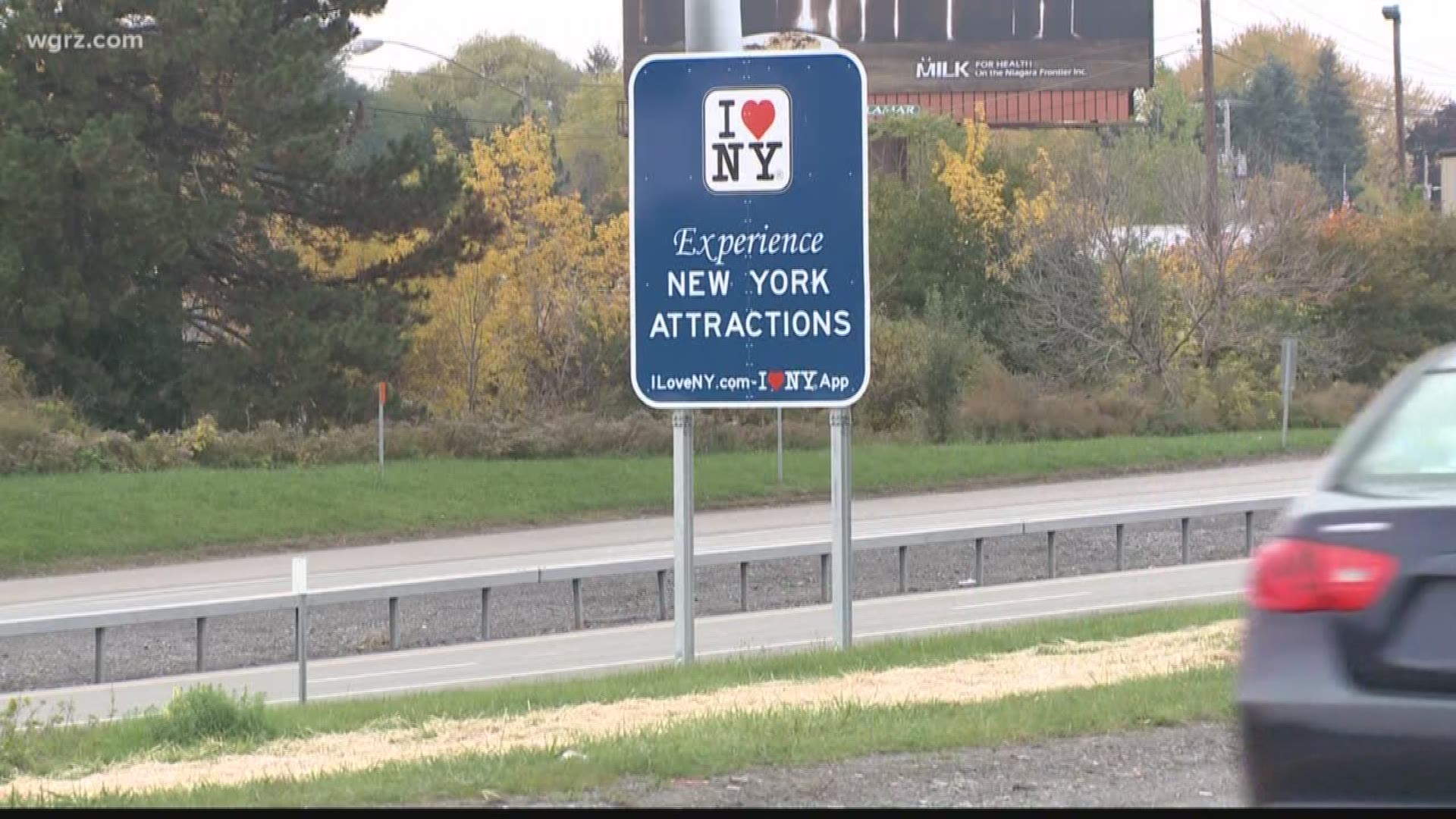ALBANY - The federal government docked New York $14 million on Thursday for installing more than 500 I Love NY signs that violate road rules and state law.
The penalty imposed by the Federal Highway Administration is its strongest move yet to try and force the removal of the blue-and-white highway signs, which Gov. Andrew Cuomo's administration spent $8.1 million installing in recent years despite being ordered not to in 2013.
FHWA Acting Administrator Brandye Hendrickson outlined the penalty in a letter Thursday to transportation official in Cuomo's administration, giving them until Sept. 30 to remove the signs or reach a compromise.
The $14 million will be restored if the state meets the deadline, Hendrickson wrote.
"Because of the installation of more than 500 non-compliant signs and repeated notification to remove these installations, the FHWA will assess initial penalties for non-compliance effective immediately," wrote Hendrickson, who was appointed by President Donald Trump.
The letter was the latest twist in a years-long, bitter dispute between the federal government and the state Department of Transportation over the signs, which tout the state's app, website and various programs targeting tourism.
The signs are located in all corners of the state along roads and highways. They're generally grouped in five, with a large "motherboard" followed by four similar signs in rapid succession.
Cuomo’s administration first began installing the signs in 2014, six months after the FHWA rejected a request from the state Department of Transportation to experiment with I Love NY signs. The state rapidly expanded the signage in 2016.
A USA TODAY Network review showed the state paid contractors overtime, printed some of the signs out of state and used emergency contracts to ensure they were up before the July 4 holiday in 2016, driving up the total cost to more than $15,000 per sign.
FHWA contends the signs are potentially hazardous and convey no information that's of use to a driver while driving. The state maintains they're safe and informational.
The signs contain a web address as well as various fonts and images that are all prohibited by strict federal rules that govern what can and can't be placed along roadways. State law, meanwhile, largely defers to the federal rules.
Hendrickson's letter was sent Thursday to Paul Karas, acting state DOT commissioner, and Matthew Driscoll, the Thruway Authority's acting executive director.
In a statement, state DOT spokesman Joseph Morrissey said the agency will keep working with the federal government toward a solution.
"We believe the signs are safe and provide useful information to drivers, and will continue to work with FHWA on a mutually beneficial resolution to this matter," he said.
Hendrickson's letter revealed the state submitted a proposal Monday to the FHWA seeking permission to "experiment" with the signs in some form going forward.
States can occasionally receive permission from the federal government to try out signage that may bend highway rules.
The FHWA rejected the state's proposal, however, since it didn't include the necessary information to be approved, Hendrickson wrote.
Both the federal government and the state DOT declined to release the proposal Thursday.
But documents obtained by the USA TODAY Network's Albany Bureau show the state proposed removing about 400 of the 514 current signs and replacing them with about 80 new-but-similar signs at the borders of the state's various regions.
In her letter, Hendrickson said the plan couldn't be approved "as is."
"However, should you continue developing the details of an experimentation request, we stand ready to work with your staff," she wrote.
Speaking to reporters Jan. 25, Karas was asked whether the state would submit any plans to FHWA in the coming weeks.
"No," Karas said.
The state's proposal was submitted four days later.
Morrissey declined to comment when asked to explain Karas' remark.
The estimated $14 million penalty represents 1 percent of the state's share of 2018 funding under the National Highway Performance and Surface Transportation Block Grant programs, according to Hendrickson.
In all, the state gets about $1.4 billion a year through the two programs, which help pay for road and highway projects across the state.
Mike Elmendorf, president and CEO of the state Associated General Contractors, said the situation is "troubling."
Elmendorf said the signs are "not particularly useful" and "not legal."
"The FHWA's position has been clear for some time now, and now we have an interruption of federal funds that are already not enough to meet the needs of the DOT system," he said. "I hope they resolve this quickly so they can have these funds restored."

